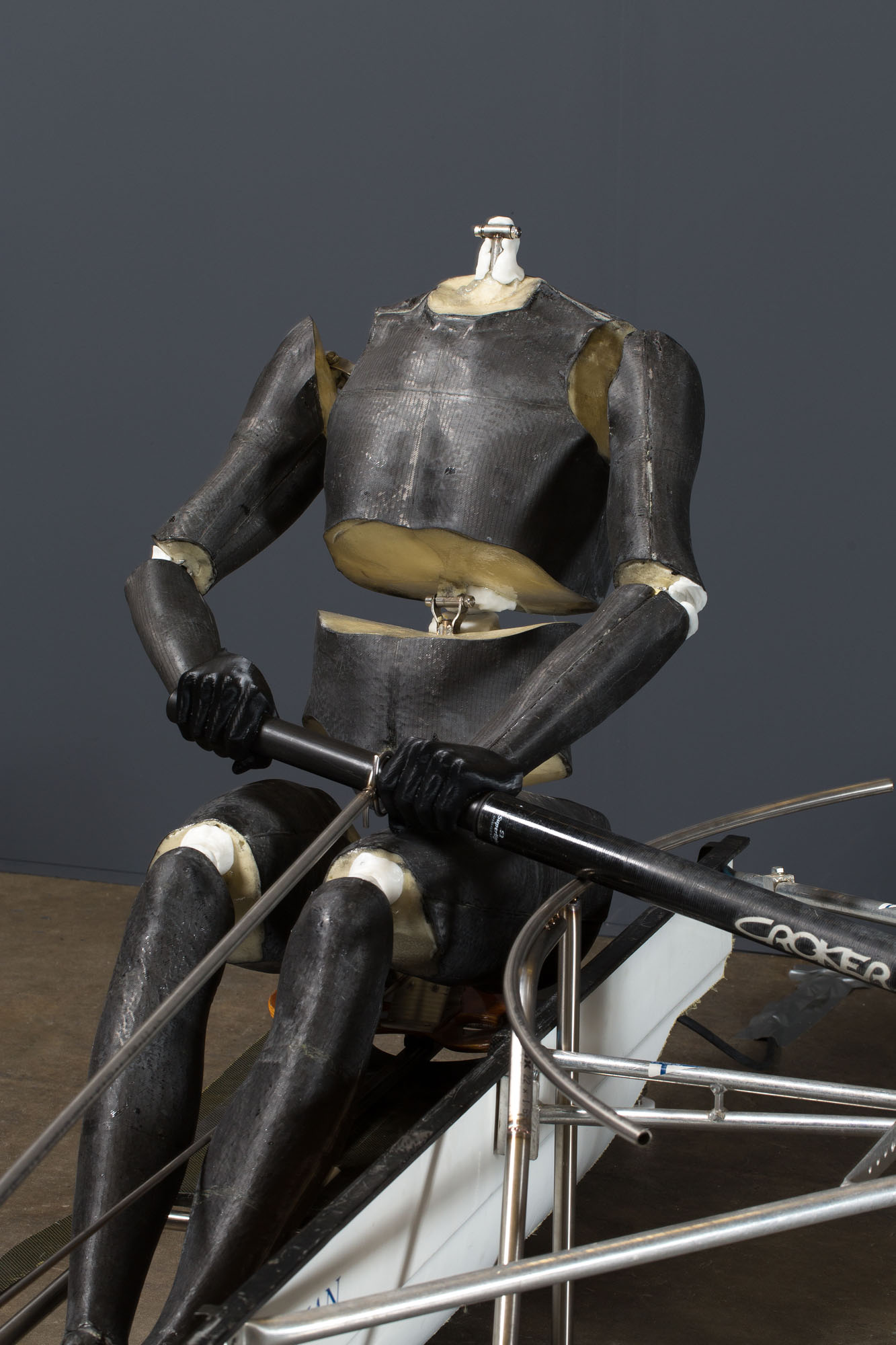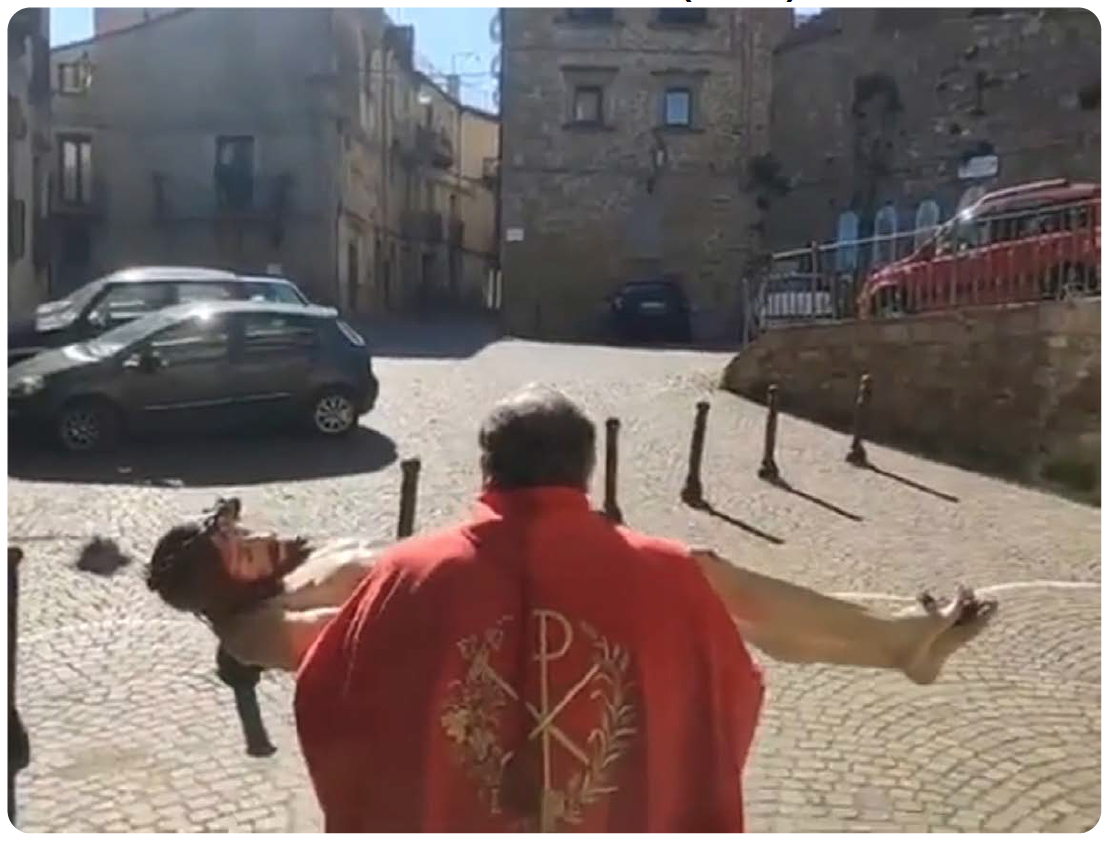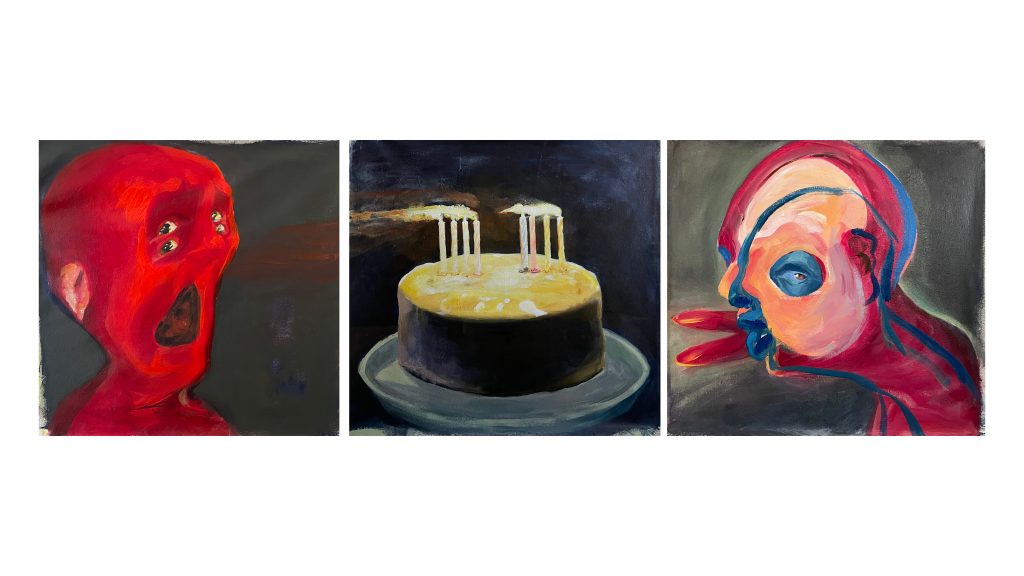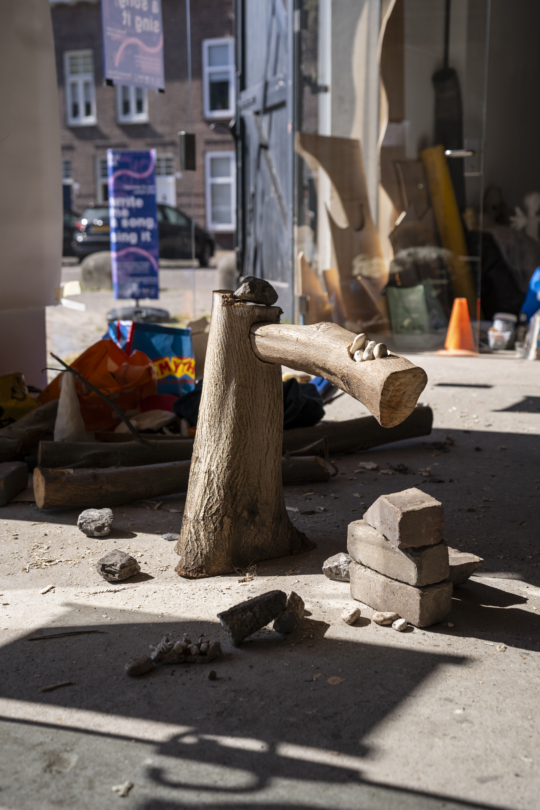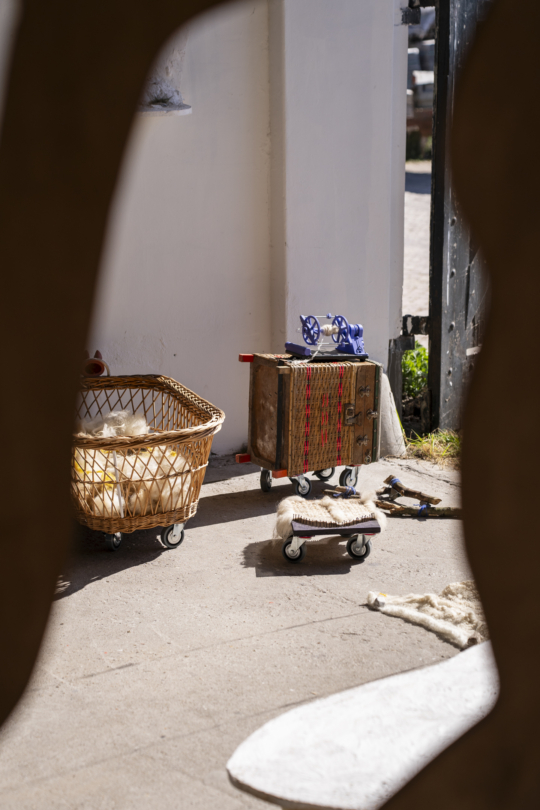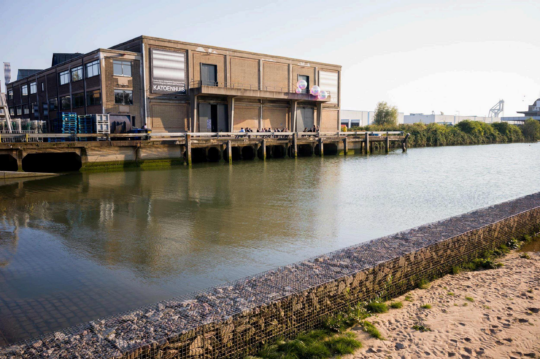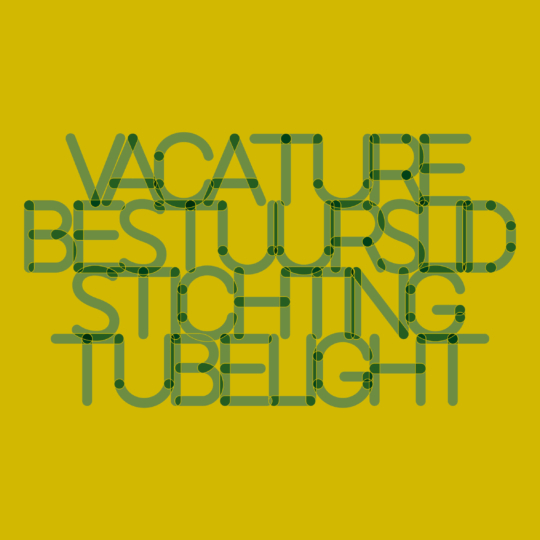The Harvard Sensory Ethnography Lab was established in 2006 by ethnographer and filmmaker Lucien Castaing-Taylor when he found himself in a predicament. He had recently moved from Colorado to Cambridge to take up a teaching position at Harvard, but the Anthropology department wanted him to teach filmmaking, and the filmmaking department would not have him. So he carved out his own space between the two, setting up the Lab as a space for experimentation in the field of Sensory Ethnography.
According to Castaing-Taylor, there is no strict definition of Sensory Ethnography. As described on the Harvard website, the Lab “encourages attention to the many dimensions of the world, both animate and inanimate, that may only with difficulty, if it all, be rendered with words”. Castaing-Taylor’s work, deeply influenced by his collaborations and interactions with Lab participants and colleagues, spans an eclectic range of subject matter, from the 2009 Sweetgrass, documenting modern-day shepherds, to his collaborations with Verena Paravel like Leviathan, about the commercial fishing industry, and the more recent De Humani Corporis Fabrica, following life – and death – inside a French hospital.
Since its founding, the Lab has platformed a number of innovators in the field, including Diana Allan, Stephanie Spray, J.P. Sniadecki, Nnenna Onuoha, and Ernst Karel, and works produced through the Lab have been exhibited and screened at majorbiennales, museums, and film festivals around the world.
Could you briefly define Sensory Ethnography and your approach to the practice?
No! I can’t. Actually. I chose the name because it is more evocative and suggestive than prescriptive and precise. Strictly speaking, it’s kind of meaningless, no? What is ethnography, anyway, in this day and age? At its core there is supposed to be a “method” anthropologists call “participant observation.” But what is that, really, when push comes to shove? As a philosopher friend of a friend put it, anthropologists had the genius (or delusion) to choose as their own putatively sui generis methodology what is simply the human condition. Something shared by us all. I mean, who doesn’t observe life, and who doesn’t participate in life, in one way or another? And which of us is not a sensorial creature? So there is no strict definition of it. And sensory experience is really infinite in its nature, however circumscribed it might be by biology, society, culture, politics etc. I called the Lab that because anthropologists have a bee in their bonnet about being the one social science or humanities discipline that gets out of the “library,” or off the “verandah,” as they say, and studies the real world in more qualitative than quantitative ways. But they remain, at their heart, what we might call cultural textologists. They are much more oriented towards the discursive than the figural, and in forms of cultural “meaning” that can be rendered in language, especially propositional prose, than they are in what we might call the plenitude of being – very little of which can ever be expressed in language. We are sensing, somatic creatures before we are semiotic ones, and academics need not to forget that, rather than constantly seeing to convert everything into their own (super reductive) discursive, disciplinary currency.
The work of the Sensory Ethnography Lab lies at the crossroads of various disciplines– film, contemporary art, and academia. How is the practice viewed differently in each field?
I don’t really know, or to be honest, care, how we are viewed by these different fields. It’s hard enough to make original work; I don’t really have the time or interest to gauge how it is perceived by others. I am not sure we have really made any difference at all to the discipline of Anthropology. Artists and filmmakers seem to be more aware of what is and is not valuable in what we are doing. Our hope is to make art that is more anchored to the real than most of what is produced under the umbrella of contemporary art, and to make cinema that is less journalistic than most documentary, and less concerned with narrative and character than most fiction. The film world is obsessed with seeing itself as “storytellers,” but very little of life ever even makes it into the things we call stories.
How has the practice of Sensory Ethnography developed since the founding of the lab and your earlier work like Sweetgrass? Are there any trends that have come and gone, or that you see emerging now?
I think everything is always changing, no? At least it better be. Nothing is sadder than some old artist or filmmaker or intellectual or politician giving a “master class” and pontificating about the proper way of doing things.
We need conventions if there is to be any meaning, if we are to be able to communicate with one another, but conventions come with their own blinkers, and over time coalesce and congeal, and end up anesthetizing us to the world… so they also always need to be subverted and broken down. Otherwise reality is reduced to realism, and manners to mannerism. I would guess that the biggest challenge today is to resist the notion that everything is just a cultural construction.
The constructivist reflex of critical theory has become an unexpected handmaiden of Trumpism and “alternative facts.” First, cinéma verité birthed the narcissistic performative horrors of Reality TV, then digitization produced new epistemologies and technologies that have led finally to AI, and now the global surge of nativism, nationalism, and populism is spawning dissimulation upon deception upon disenchantment upon dis-almost-everything so that the very future of humanity appears precarious in a way that is without precedent for about 90 years now. The banality of evil is now so widespread, so many millions are willing to be the mindless executioners of the neo-fascists, that it is hard to retain much faith in humanity, a species that has visited horror on the world (both its conspecifics and others, animal and vegetal and mineral) on a scale that no other species could even begin to match.
Time seems like an essential element to the practice of Sensory Ethnography– putting oneself in a place and waiting to see what meaning comes out of it. It’s important to the viewing process as well; the act of sustained looking elicits powerful bodily responses and deeper consideration of the subject matter. Could you talk about the role of time in the practice and presentation of Sensory Ethnography, and if it poses challenges in a fast-paced media environment?
Well, I think you just put it better than I ever could. It may by now be a cliché to say of modernity that time came to be experienced as fragmentary, multiple, and even, so to speak, ephemeral, as our “temporal regime” became ever more consumed with, and by, the present, leading also to embodied experience to be characterized as “inauthentic,” incomplete, or divested of meaning. This is incomparably truer today in the 21th century than it was in earlier moments of so-called modernity. Our collective Attention Deficit (Hyperactivity) Disorder is a symptom of an insufficiency, but also of course of sufficiency, plenty, even excess…. And even of Inactivity and Immobility… Constant stimulation leads to a kind of blindness and sensorial atrophy, and even indifference towards other beings and lifeworlds. Action and movement are both embodied endeavors that occur in and over time…. The compression of time has gone hand in hand with the compression of space. One doesn’t have to be outrageously romantic or naively nostalgic for some pre-modern sensibility of temporal duration to recognize how much is lost with this, and also how most art and most cinema is itself a reflection of, and caters to it.
What do you consider most interesting or urgent to explore about humankind’s current relationship with nature?
I really don’t know. I am not an idea person. I am full of shit, and don’t have any confidence in any of my ideas. If I really believed in my opinions, I would probably write, be an intellectual, or a politician or something. But since you ask, well, let me try. I think I think that we (humankind) are not exactly kith and kin with nature, but that we are nature itself. Emanuele Coccia even argued, superficially paradoxically, that all of our insanely brilliant and awful technological inventions are the closest thing we have to what we call “nature”, including evolutionary adaptations, in other species. He’s right, even when they are or become thoroughly dystopian – and disadvantageous, whether to ourselves or others. The history of evolution, as he said, is a history of broken technologies.
But it is one thing to say we are part and parcel of nature. It is quite another to say it (or make an artwork that conveys or demonstrates it) in a way that actually makes people feel it. Someone once said that most of the so-called “chattering classes” (ourselves very much included) now imagine they “know” that anthropogenic global warming is real, and that we have unwittingly engineered a climate crisis of a scale that we cannot fathom (never mind fathom our way out of), but we don’t actually, when push comes to shove, truly “believe” it. Look at how both production and consumption have returned with a vengeance since the COVID 19 pandemic.
Film festivals and art fairs and biennales are now obliged to engage in self-serving green-washing like many others, but it is all deeply deceptive. I think the ultimate challenge – as many indigenous cosmogonies recognize – is to create work that will truly convince people that Nature Is Us, and only when or if we manage to do so will an ethic of care that meets the challenge of our Anthropocenic or Capitalocenic or Plantationocenic or Chthulucenic or Wotevacenic moment be able to come into being – care at once for ourselves and for our more-than-human sisters and brothers and others. Verena’s and my film Leviathan was a very early effort that now seems super timorous in this direction, to adumbrate an aesthetic for the so-called Anthropocene, but we really haven’t begun to meet the challenge.
Leviathan, co-directed with Verena Paravel, centered on the industrial fishing industry and humankind’s exploitation of the sea. Could you talk about your experience with filmmaking at sea?
It was amazing. So intense. We set out to make a film about our relationship to the sea – through the prism of industrial fishing, yes, but that’s not the real subject of the work. Our initial hope, weirdly, was to do so without our ever seeing the sea. We filmed on land, in and around New Bedford (the mythic port of departure of Moby Dick), for 6 months before we ventured out to sea. And in the end we made a film, quite unintentionally, in which you never see land. And, for that matter, you barely see daylight. Go figure. I wonder why? Anyway, the whole experience was totally wonderful and absolutely terrifying. And humbling beyond belief. Neither of us had ever felt so small, so Lilliputian, so dwarfed by the elements. The groundfish dragger we were on was about 25m long, but we felt too miniscule (and irrelevant) for words out there in the middle of the Atlantic. The experience was totally sublime, even as we were bearing witness to, and perhaps even complicit with, our raping of the ocean and many of the species coursing their way through it. It was so aesthetically overwhelming being on the boat that I never wanted to quit filming – we did not stop until we realized, in looking at our footage, that everything we were filming looked just like what we had already filmed… that we were having no new insights or experiences that could contribute anything to the film. It was quite a disappointment in the end.
Is water a theme you would like to explore further in your work?
I’m currently building an experimental permaculture laboratory at my studio in Catalonia. I’m working on it intensely this year, but it will be a life-time project. And water is certainly at the heart of it: filtering and recycling all grey and black water, and harnessing as much rainwater as I possibly can. Fortunately this spring has been exceptionally wet, but that doesn’t really make me very sanguine for the future. My valley goes up in smoke every ten years or so, and it is only likely to become more frequent.
In any event, yes, I think water is good-to-think-with, as Lévi-Strauss said, and not just good to drink, for almost every species on earth, in an infinity of ways. And if we think the rise of the neo-fascist right in Europe is in part a response to immigration from Africa and the Middle East — folks fleeing regions becoming ever more inimical to human life because of desertification caused in significant measure by the Global North’s rapacious capitalistic consumptive practices — well, we haven’t seen nothing yet. Fine, bien-pensants can retort that we humans, like plants, are all migrants, all refugees — that no one is native or indigene and no one is alien or invasive — but I think it’s almost impossible to imagine the magnitude of the dystopian sociopolitical (never mind environmental) consequences of the climate crisis we have created and, with our eyes wide shut, which we continue to exacerbate. As the poet John Donne put it, in one of his Psalms, from the womb to the tomb one is never fully awake. Or something like that.
Skye Kuppig is a writer born in the US and based in Rome. With degrees in film from the Holden School and Columbia University and a background in global film sales, she covers the intersection between film and the contemporary arts in international settings.





